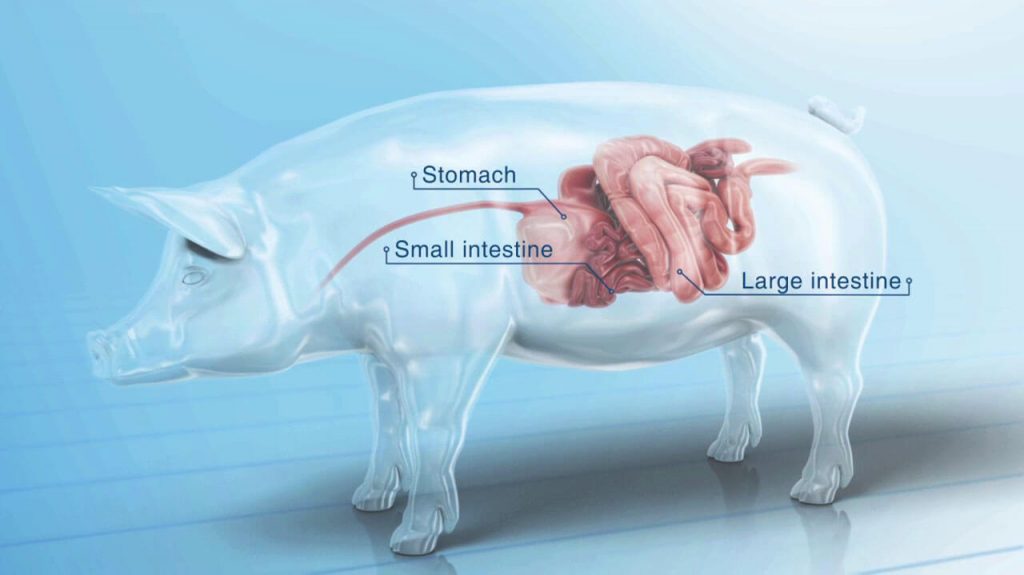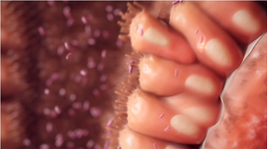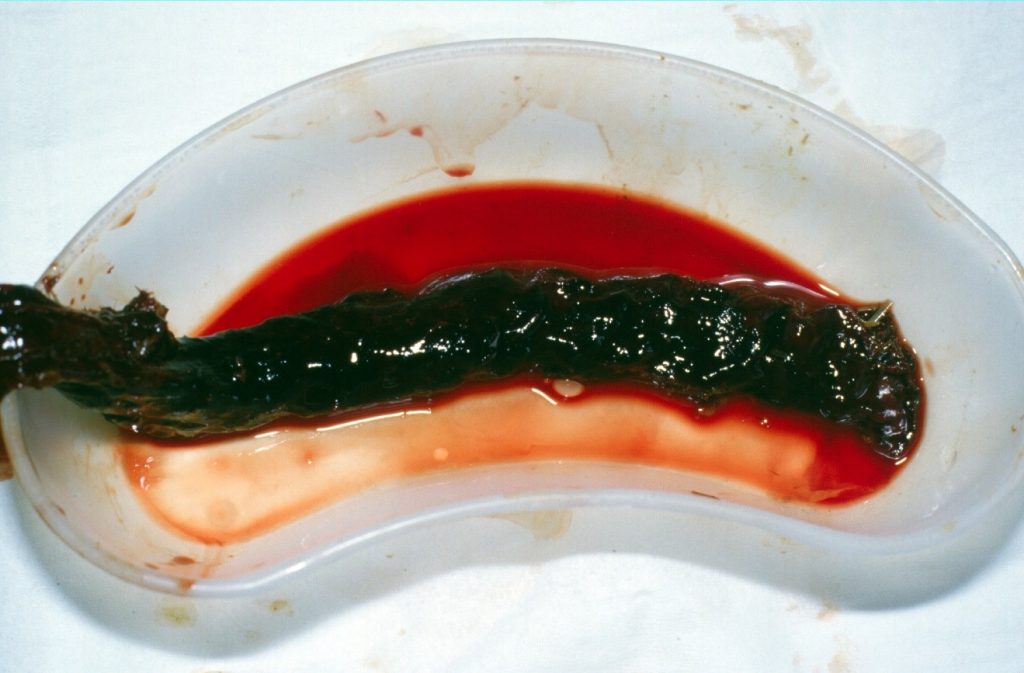
It is extensively documented that during the 1960s, as the UK pig industry underwent intensification of production and control of infectious diseases, reports emerged of a new condition in growing pigs and breeding stock. This condition, observed mainly in high health status animals, involved sudden death associated with severe intestinal bleeding. Research in the 1970s connected these acute intestinal issues with adenomatosis, which thickens the gut wall in young animals, along with other occasional gut problems. However, it wasn’t until the mid-1990s that the cause, identified as proliferative enteropathies (PE), was finally identified.
Extensive research led by Gordon Lawson and Alan Rowlands at Edinburgh revealed a novel bacterial species responsible for the diverse clinical symptoms observed. This bacterium, now known as Lawsonia intracellularis, attaches to intestinal cells, particularly in the ileum (lower small intestine). It then enters the cell wall, disrupts cellular function, and replicates, resulting in various forms of pathology. Unlike typical intestinal bacteria, Lawsonia intracellularis acts more like a virus, as it cannot reproduce outside the host cell.
PE of pigs is now well established as a cause of significant health insult and economic loss through the world’s pig producing industries.
Identification of Disease
Lawsonia intracellularis infection in pigs manifests as two primary and distinct syndromes, with two additional syndromes occasionally arising as complications. Therefore, it is essential to recognise and distinguish all conditions as separate entities.
1) Porcine Intestinal Adenopathy (PIA) or Ileitis
PIA primarily affects younger growing pigs, typically between 6 and 8 weeks of age, and can persist into the finishing herd beyond 3 months old. The main clinical signs include diarrhoea, often characterised by loose pasty scour rather than profuse watery stools, along with weight loss and deteriorating body condition. In some instances, the gut dysfunction may be so mild that faeces appear normal, resulting in a subtle loss of growth. As a consequence, the affected herd exhibits inconsistent and disappointing growth rates among individual pigs.
2) Complicating Conditions of PIA
Two complicating fatal conditions are occasionally seen in individual animals.
- Necrotic enteritis. The thickened gut wall exhibits a necrotic luminal surface, which closely resembles the appearance of necrotic enteritis caused by Salmonella. However, it is important to note that the pathology associated with Lawsonia intracellularis infection typically remains confined to the terminal ileum and does not extend beyond that region.

- Hosepipe gut. The gut wall is smooth and thickened but the mucosal surface of the ileum is ulcerated.
3) Proliferative Haemorrhagic Enteropathy (PHE)
It primarily affects older growing pigs and replacement breeding gilts. Affected pigs are often found dead, although some may exhibit symptoms such as paleness, depression, and the production of foul-smelling black tarry faeces. Clinically, this condition closely resembles severe gastric ulceration.
Findings during post-mortem examination, a rope of clotted blood fills the lower small intestine and upper large intestine, while tarry material is observed in the lower gastrointestinal tract. The terminal ileum may display thickening, but the mucosal surface is typically raw and ulcerated. Bleeding is not visible to the naked eye.

Treatment
In the early stages of a PIA outbreak, prompt diagnosis and intervention are crucial. Antibiotics can be effective in treating PIA, considering that the bacteria responsible, Lawsonia intracellularis, resides within the host cells. Therefore, antibiotic selection should focus on agents that can penetrate the cell wall. It is important to consult with a veterinarian for expert advice and guidance on the appropriate antibiotic treatment regime for PIA.
In situations where hygiene is a concern, leading to elevated levels of environmental contamination, implementing a thorough cleaning program becomes essential. Regular and effective cleaning practices help minimise the risk of disease transmission and maintain a healthy environment. Additionally, it is crucial to prioritise stress avoidance as part of overall health control protocols. Minimising stressors such as overcrowding, excessive noise, and abrupt changes in management practices can contribute to the well-being of the animals and support their immune system, enhancing their ability to resist diseases.
Please follow us on Facebook UK only pig breed that is a registered Charity England and Wales #1190469 Scotland SCO 52662 Become and friend of the OSBPG Charity and help us to continue creating a better future for our breed, its bloodlines and its breeding potential